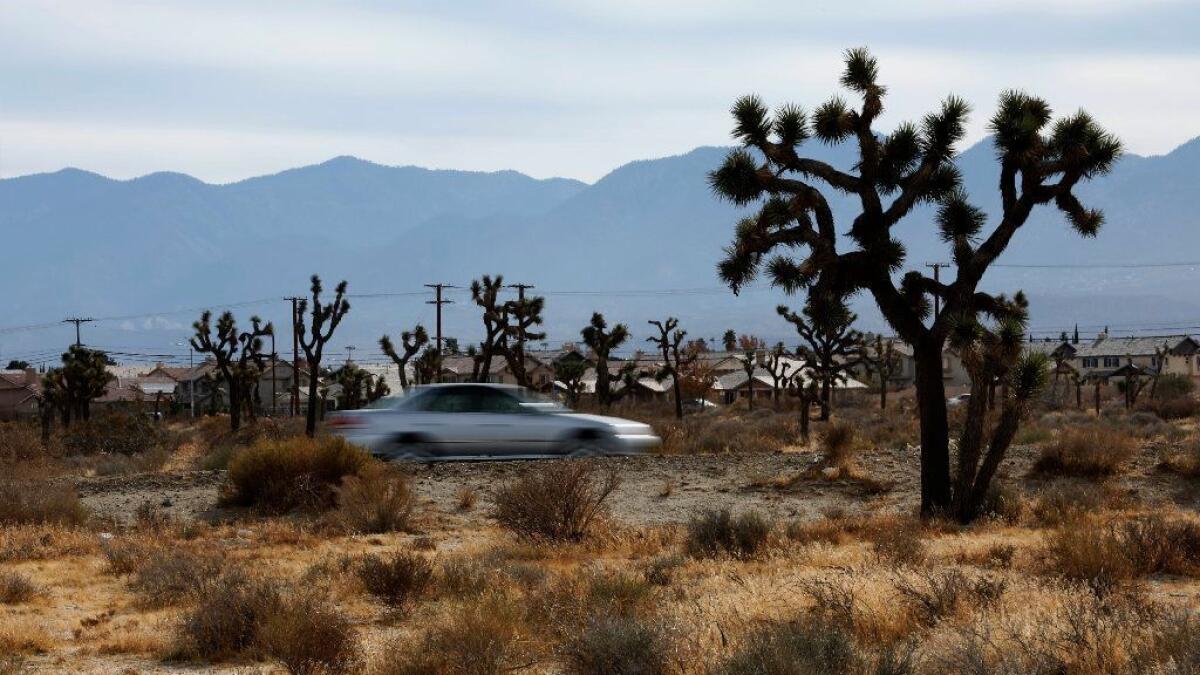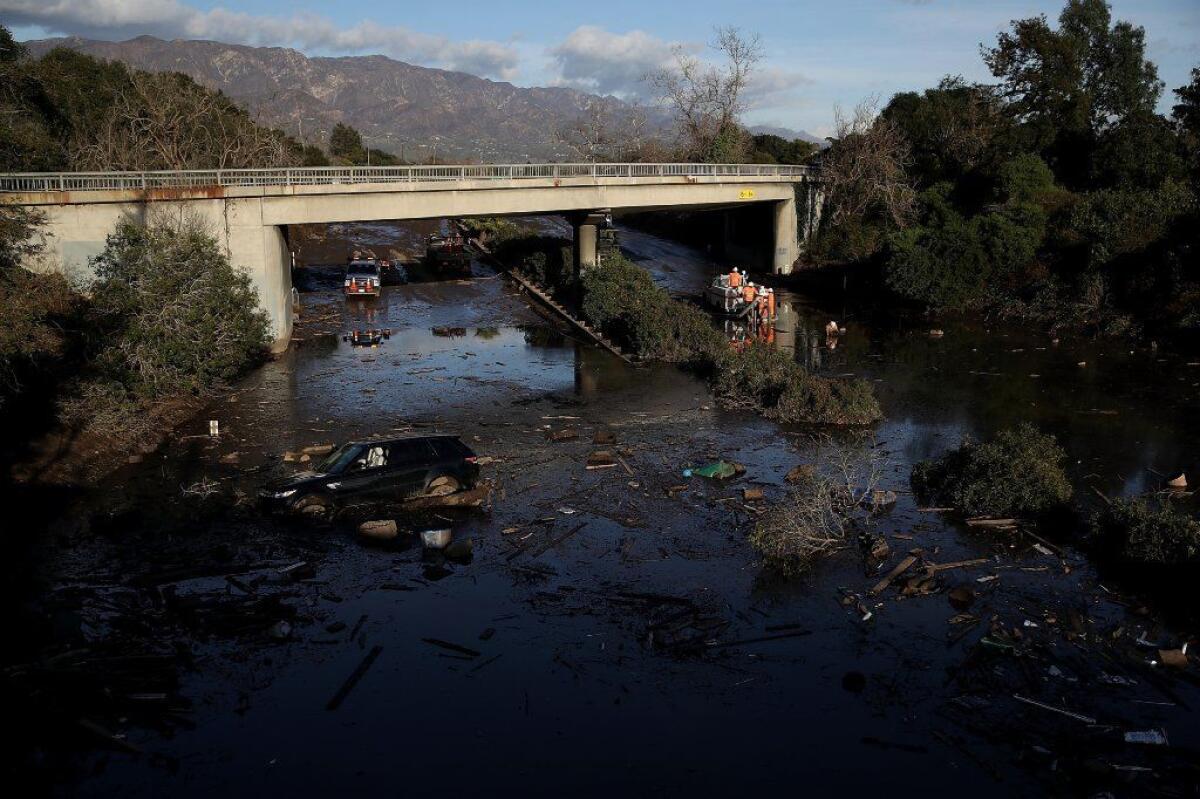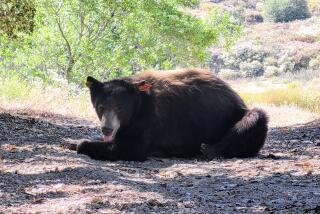L.A.’s 20th century dream of building freeways refuses, even now, to die

If no one in 2018 would argue, as a young writer named David Brodsly did in 1981, that the “L.A. freeway is the cathedral of its time and place,” or that it’s the spot where Angelenos “spend the two calmest and most rewarding hours of their daily lives,” as British architectural historian Reyner Banham put it with almost laughable enthusiasm a decade earlier, there’s no doubt that both the practical and metaphorical meanings of the freeway continue to preoccupy Southern Californians.
Any sense that we’ve put freeway-building behind us, in fact, could be squashed by spending even a few minutes looking at recent headlines, which in the last few weeks have included items on plans to widen the 710 through Long Beach and an Orange County stretch of the 405.
Then came a report from my colleague Louis Sahagun on plans by Caltrans, the state’s once-imperious road-making agency, to build a freeway linking Palmdale and Victorville. Carrying a price tag of $8 billion and part of a larger project called the High Desert Corridor, it would stretch through the Mojave Desert from the northeastern corner of L.A. County into San Bernardino County. It would be the first freeway completed in L.A. County since the controversial, much-delayed and highly litigated Century Freeway opened in 1993.
The plan suggests that Caltrans hasn’t quite given up the hope of someday completing the perfect, all-encompassing freeway network, a fantasyland Banham dubbed “Autopia” in 1971. It also suggests that when we talk about growth, especially along the desert fringe of the L.A. metropolitan behemoth, we almost always talk in the next breath about freeways.
Or does it? While it’s certainly true that the freeway continues to be synonymous with an expansionist, forward-looking outlook for the planners of exurban subdivisions — each new section of blacktop a tentacle stretching outward from L.A.’s metro core toward new customers and new opportunity — the Palmdale project is in most every other way a relic, a vestige of Brodsly’s notion, now nearly 40 years old, that it is only through freeways that Los Angeles as a whole manages to achieve any “clear and coherent structure.”
If anything, something nearer the opposite now seems true: When the 101 near Santa Barbara was overtaken by a mudslide in January, the freeway seemed to stand in for all of the ways in which Southern California’s relationship with the natural world is out of whack, any sign of Brodsly’s coherence buried under tons of sludge and debris.
A closer look at the politics of the High Desert Corridor proposal, which also includes a potential rail route, reflects how much things have changed since his book appeared. Preliminary funding for the freeway will come from revenue produced by the Measure M sales tax, approved in 2016. The lion’s share of Measure M’s gigantic total haul — an estimated $100 billion to $120 billion — will go to transit projects, including new subway and light-rail lines across L.A. County.
But tax-hike measures like M require two-thirds’ approval from voters. And so those measures, though aimed in large part at boosting the region’s mass-transit infrastructure, tend to include significant funding for road projects, as a sweetener for voters more concerned about crumbling concrete and traffic jams than new rail lines.

The truth, though, is that freeway-building has never had as much support from the general public as the boosters would have you believe; it has always been a question of which communities have the resources and political clout to block new roadways and which do not.
That’s one theme of Eric Avila’s 2014 book “The Folklore of the Freeway: Race and Revolt in the Modernist City,” the most important recent study of the complicated relationship between Angelenos and their freeways. Avila zeroes in on the part of the story that Banham, in his rush to celebrate Autopia, largely left out; he is particularly good at documenting the toll L.A.’s freeway-building binge took on neighborhoods like Boyle Heights, which was caught in a noose of new interstates and on ramps in the decades after World War II.
“This book strives to listen to what inner-city people think about the freeways that fracture their communities,” Avila notes, adding that “the freeway casts darker shadows over some communities than others.”
The question opponents of the new Palmdale-to-Victorville freeway are asking now is what kind of shadow the project promises to cast over the high desert in particular. There the goal of adding new lanes is not simply about reducing travel times and easing congestion on other freeways; it is also about making this corner of L.A. County more hospitable, despite the vulnerability of the desert ecosystem, to the business of subdivision building.
It’s in that sense that the calculus of freeway expansion reveals itself most starkly. I’m left hoping that yet another writer, Mike Davis, will find the time to weigh in on the High Desert Corridor plan, since the new freeway would run just north of the ruins of the Llano del Rio socialist collective, now abandoned for a full century, where he set the prologue to his 1990 book “City of Quartz.”
It was also in the prologue that Davis defined with almost perfect precision the Los Angeles of the peak freeway-building era as “a city without boundaries, which ate the desert … and dreamt of becoming infinite.” The Palmdale-to-Victorville freeway is the last gasp of that Los Angeles.
If new road projects are — at least in the view of some transportation planners and elected officials — the price to be paid for Metro expansion, it’s also true that no ballot measure involving freeways alone would likely come anywhere close to two-thirds’ support from voters today. So maybe we’ve been sold a bill of goods. Maybe the road projects tossed into ballot measures like M aren’t sweeteners for certain groups of voters as much as efforts to piggyback on the growing electoral support for mass transit. It’s telling in that sense that funding sources for the San Bernardino County portion of the freeway — beyond the reach of Measure M funding, which is limited to L.A. County — have yet to be pinned down.
A century ago, New York architect Cass Gilbert described the skyscraper as a machine designed “to make the land pay.” In Southern California, it’s never been the tall building that executes that sort of resource extraction. It has instead been the freeway.
We’ll have to see how this latest Caltrans effort plays out, but the substantial opposition that’s already emerged to the Palmdale freeway suggests that the land — in this case the desert — and its defenders are long past any willingness to pony up.
Twitter: @HawthorneLAT
More to Read
The biggest entertainment stories
Get our big stories about Hollywood, film, television, music, arts, culture and more right in your inbox as soon as they publish.
You may occasionally receive promotional content from the Los Angeles Times.











